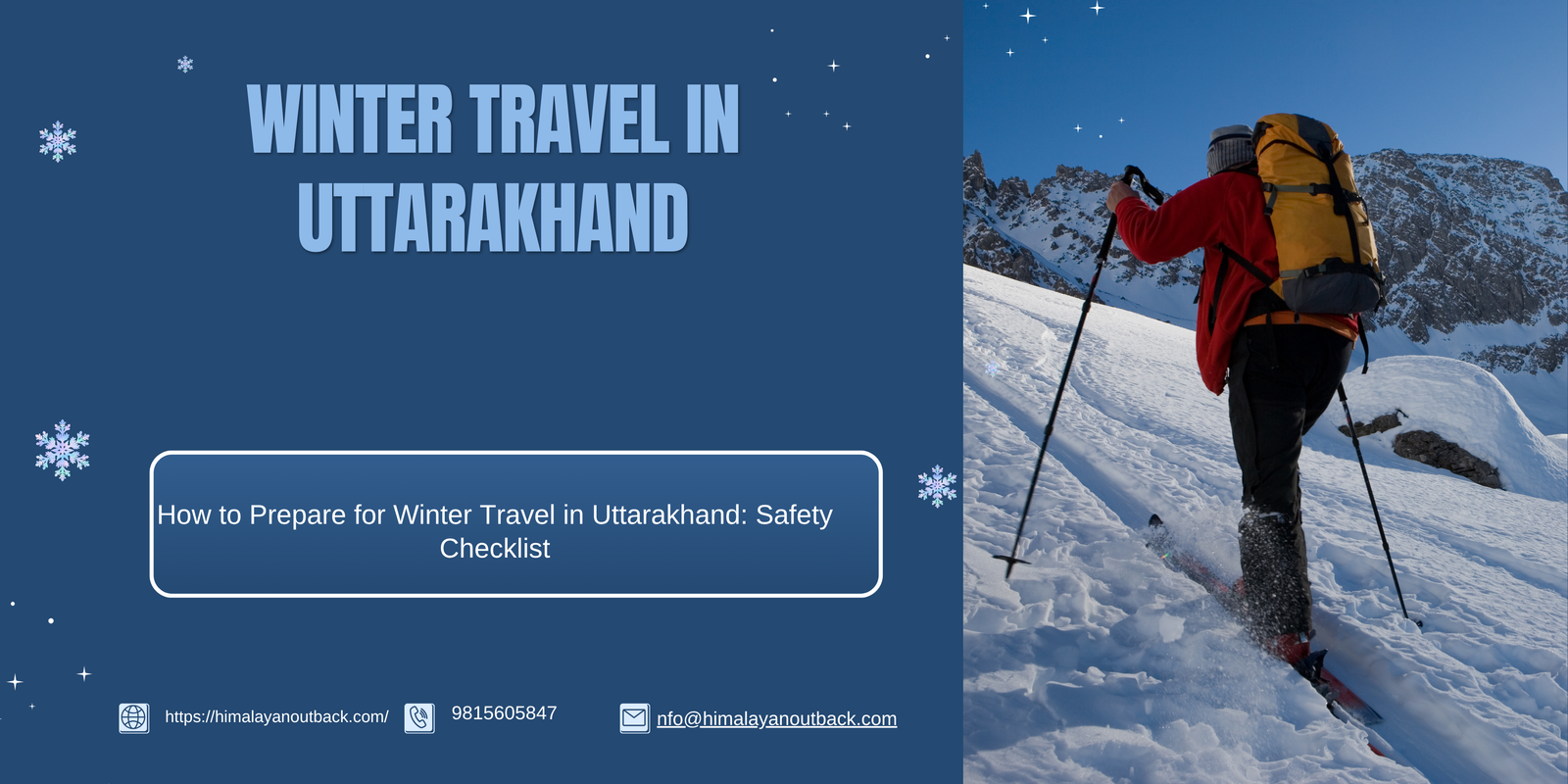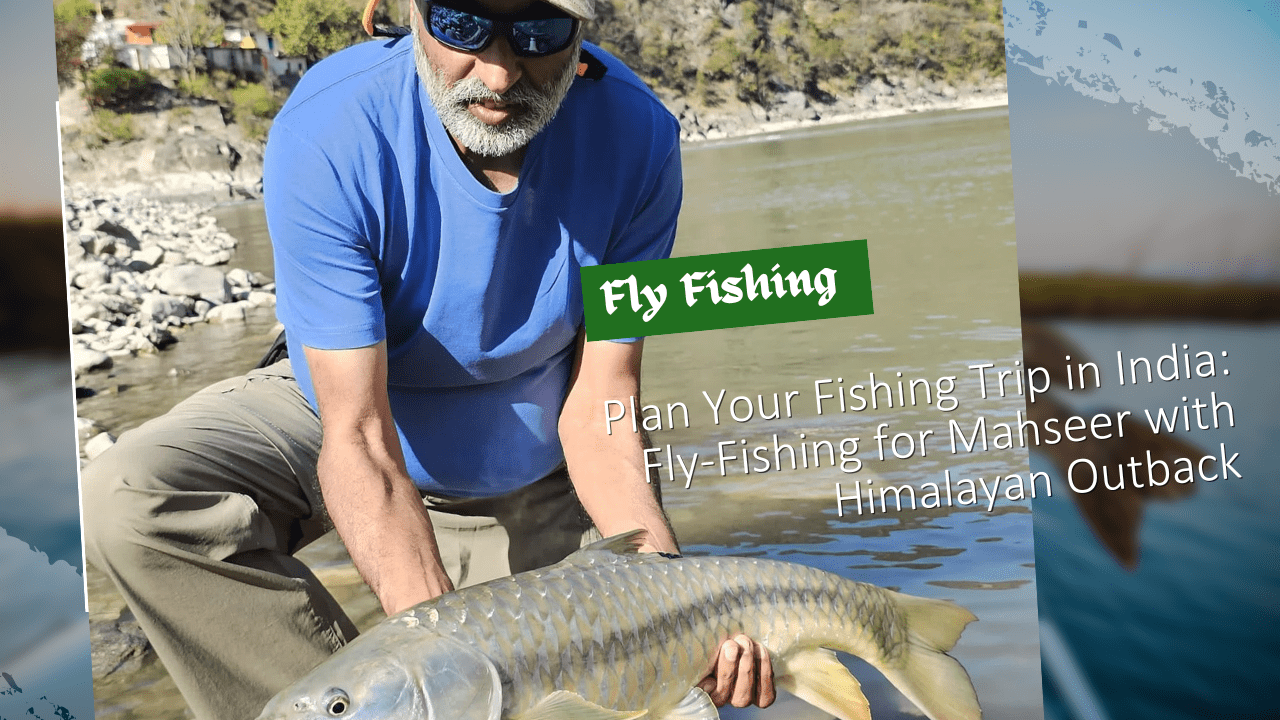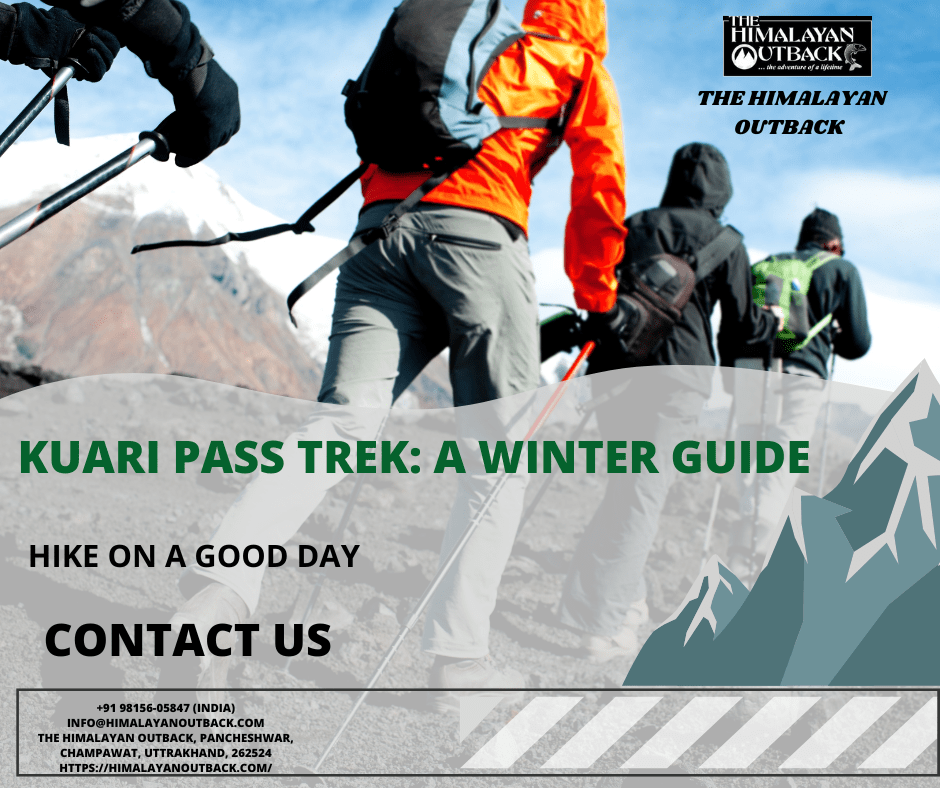Winter transforms Uttarakhand into a pristine wonderland of snow-capped peaks, frozen lakes, and crisp mountain air. While the region’s beauty reaches its pinnacle during these colder months, winter travel in the Himalayas demands careful preparation and respect for nature’s power. Whether you’re planning the Dayara Bugyal trek in Uttarakhand or exploring other winter destinations across the state, proper preparation can mean the difference between an unforgettable adventure and a dangerous situation.
This comprehensive safety checklist will equip you with essential knowledge for winter travel in Uttarakhand, covering everything from gear selection to emergency protocols. The mountain weather can change rapidly, temperatures can plummet without warning, and trails that seem manageable in summer become challenging winter expeditions.
Many travelers underestimate the severity of Himalayan winters. Temperatures can drop to -20°C (-4°F) at higher altitudes, while sudden snowstorms can reduce visibility to mere meters. Understanding these conditions and preparing accordingly ensures your winter journey becomes a cherished memory rather than a cautionary tale.
Essential Winter Gear for Uttarakhand Travel
Clothing and Layering System
Your clothing system serves as your primary defense against harsh mountain conditions. The three-layer approach remains the gold standard for winter mountain travel:
Base Layer: Choose moisture-wicking synthetic materials or merino wool. Avoid cotton, which retains moisture and loses insulation when wet. Pack at least two sets of thermal underwear and extra pairs of moisture-wicking socks.
Insulation Layer: Down jackets provide excellent warmth-to-weight ratios in dry conditions, while synthetic insulation performs better when wet. For treks like the Dayara Bugyal trek in Uttarakhand, where weather conditions can vary dramatically, consider bringing both options.
Outer Shell: Your shell jacket and pants should be waterproof, windproof, and breathable. Look for garments with sealed seams and reliable zippers. Ventilation zips help regulate body temperature during strenuous activities.
Footwear and Accessories
Winter boots rated for temperatures below -20°C (-4°F) are non-negotiable. Insulated, waterproof boots with aggressive tread patterns provide traction on icy surfaces. Pack gaiters to prevent snow from entering your boots.
Essential accessories include insulated gloves with liner gloves underneath, a warm hat that covers your ears, a neck gaiter or balaclava, and high-quality sunglasses or goggles to protect against snow blindness.
Navigation and Safety Equipment
GPS devices with extra batteries become crucial when familiar landmarks disappear under snow. Carry detailed topographic maps in waterproof cases, along with a reliable compass. A whistle, headlamp with extra batteries, and emergency shelter complete your basic safety kit.
Weather Patterns and Seasonal Considerations
Understanding Uttarakhand’s Winter Climate
Uttarakhand experiences distinct winter phases that significantly impact travel conditions. Pre-winter (November to December) offers stable weather with crisp mornings and pleasant afternoons. Deep winter (January to February) brings the heaviest snowfall and most severe temperatures, while late winter (March to April) sees gradual warming but unpredictable weather patterns.
The DayaraBugyal trek in Uttarakhand typically runs from late May through October, avoiding the harshest winter conditions. However, shoulder season travel requires understanding how rapidly conditions can deteriorate.
Altitude-Related Weather Changes
Weather conditions change dramatically with elevation gain. Valley floors might experience pleasant temperatures while higher elevations face blizzard conditions. The DayaraBugyal region, reaching 3,810 meters at Syari Top, experiences significantly different weather than the starting point in Barsu village.
Plan for temperature drops of approximately 6°C per 1,000 meters of elevation gain. Wind chill factors can make conditions feel much colder than actual temperatures, particularly on exposed ridges and meadows.
Route Planning and Risk Assessment
Pre-Trip Research
Thorough route research prevents dangerous surprises. Study recent trip reports, consult local guides, and check current trail conditions. The Dayara Bugyal trek in Uttarakhand follows well-established paths, but winter conditions can make familiar routes unrecognizable.
Contact local authorities, forest departments, or established trekking companies like The Himalayan Outback for current conditions and permit requirements. Many high-altitude areas require special permits during winter months.
Alternative Route Planning
Always plan alternative routes and bailout options. Identify multiple descent routes, emergency shelter locations, and evacuation points. Share detailed itineraries with reliable contacts, including expected return dates and emergency procedures.
Weather windows can close rapidly in winter, making flexible planning essential. Be prepared to extend stays in safe locations rather than pushing through dangerous conditions.
Health and Medical Preparations
Altitude Acclimatization
Winter conditions compound altitude-related challenges. Cold air contains less oxygen, making proper acclimatization even more critical. Plan gradual elevation gains, allowing extra days for adjustment.
Recognize altitude sickness symptoms: headaches, nausea, fatigue, and difficulty sleeping. Severe symptoms require immediate descent regardless of weather conditions.
Winter-Specific Health Concerns
Hypothermia and frostbite pose serious risks during winter travel. Learn recognition and treatment protocols for both conditions. Hypothermia symptoms include uncontrollable shivering, confusion, and coordination loss.
Frostbite typically affects extremities first. Keep hands, feet, and face warm and dry. Recognize the progression from frostnip (reversible cold injury) to deep frostbite (permanent tissue damage).
Medical Kit Essentials
Pack medications for altitude sickness, including acetazolamide (Diamox) if recommended by your physician. Include extra supplies of any personal medications, plus treatments for common winter ailments like dehydration and sunburn.
Cold weather increases caloric and hydration needs. Pack extra food and water purification methods, as natural water sources may be frozen.
Emergency Protocols and Communication
Communication Equipment
Satellite communicators or emergency beacons provide vital communication links when cell service fails. Many areas of the Dayara Bugyal trek in Uttarakhand have limited or no cellular coverage, making backup communication essential.
Register devices before departure and ensure all team members understand operation procedures. Share emergency contact protocols with family members or base support teams.
Emergency Shelter and Survival
Winter emergencies require immediate shelter from wind and precipitation. Pack emergency bivouac gear, including space blankets, emergency shelters, and fire-starting materials that work in wet conditions.
Practice emergency procedures before departure. Know how to build snow shelters, recognize hypothermia stages, and execute evacuation procedures.
Evacuation Planning
Helicopter evacuations become extremely difficult or impossible in winter weather. Plan ground evacuation routes and understand that rescue operations may face significant delays.
Carry comprehensive emergency contact information, including local authorities, medical facilities, and evacuation services. Understand insurance coverage limitations for high-risk winter activities.
Food, Water, and Nutrition Management
Winter activities dramatically increase caloric requirements. Plan for 4,000-5,000 calories per person per day during strenuous winter travel. Pack high-energy foods that remain edible in freezing temperatures.
Water management becomes complex when temperatures drop below freezing. Insulated bottles help prevent freezing, while thermoses maintain hot beverages. Consider water treatment methods that function in near-freezing temperatures.
Transportation and Logistics
Road conditions in Uttarakhand can become treacherous during winter months. Snow, ice, and landslides frequently block mountain roads. Build flexibility into travel schedules and consider alternative transportation routes.
The drive to Barsu, the starting point for the DayaraBugyal trek in Uttarakhand, typically takes 6-7 hours from Dehradun in good conditions. Winter weather can double this travel time or make roads impassable entirely.
Final Safety Recommendations
Winter travel in Uttarakhand rewards prepared adventurers with spectacular scenery and unique experiences. However, the mountains demand respect and careful preparation. Never compromise on safety equipment or rush important decisions due to schedule pressures.
Consider hiring experienced local guides familiar with winter conditions. Companies like The Himalayan Outback possess invaluable knowledge about seasonal variations, emergency procedures, and current conditions that can enhance both safety and enjoyment.
Your Winter Adventure Awaits
Proper preparation transforms winter travel in Uttarakhand from a risky endeavor into an achievable adventure. The region’s winter beauty—from snow-laden meadows to crystalline mountain vistas—creates memories that last a lifetime.
Start planning your winter journey by assembling quality gear, studying weather patterns, and developing comprehensive safety protocols. Whether you’re considering the DayaraBugyal trek in Uttarakhand during shoulder seasons or exploring winter destinations throughout the state, preparation remains your best insurance policy.
Remember that the mountains will always be there, but weather windows and safe conditions are fleeting. Make conservative decisions, travel with experienced partners, and never hesitate to turn back when conditions deteriorate. Your safety ensures you’ll return for many more Himalayan adventures.






